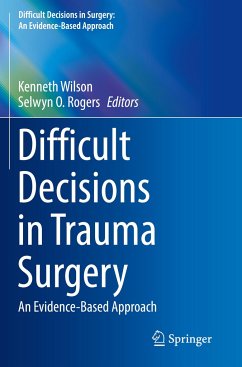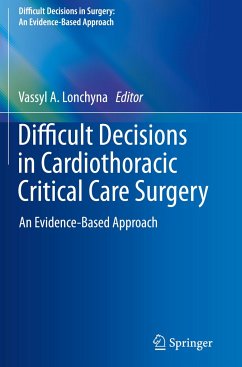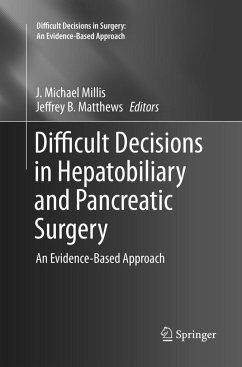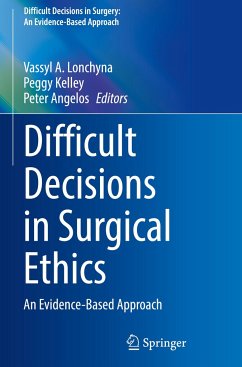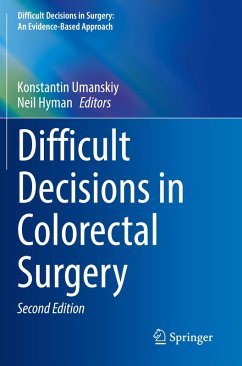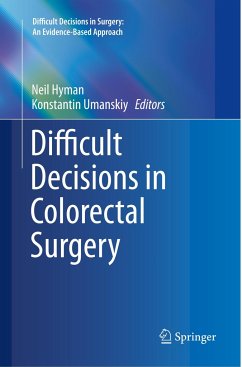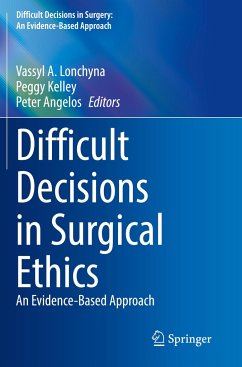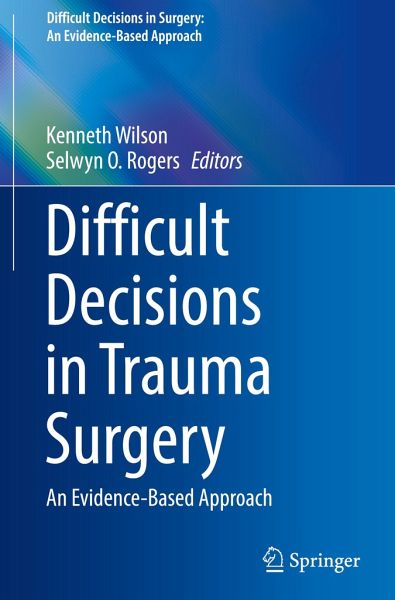
Difficult Decisions in Trauma Surgery
An Evidence-Based Approach
Herausgegeben: Wilson, Kenneth; Rogers, Selwyn O.

PAYBACK Punkte
56 °P sammeln!
This book provides a practical guide to decision making within the realm of trauma surgery. Each chapter covers the ideal approach, rather than customary care, for the treatment of the chosen difficult decision or controversy. A broad range of topics are covered with particular attention given to resuscitation, wound management, thoracic and abdominal trauma, antimicrobial management, transplant considerations, vascular trauma, traumatic brain injury, pediatric trauma and ethics.Difficult Decisions in Trauma Surgery aims to help improve the treatment of trauma patients and is relevant to surgi...
This book provides a practical guide to decision making within the realm of trauma surgery. Each chapter covers the ideal approach, rather than customary care, for the treatment of the chosen difficult decision or controversy. A broad range of topics are covered with particular attention given to resuscitation, wound management, thoracic and abdominal trauma, antimicrobial management, transplant considerations, vascular trauma, traumatic brain injury, pediatric trauma and ethics.
Difficult Decisions in Trauma Surgery aims to help improve the treatment of trauma patients and is relevant to surgical trainees and practicing surgeons, and as well as medical professionals working within trauma medicine.
Difficult Decisions in Trauma Surgery aims to help improve the treatment of trauma patients and is relevant to surgical trainees and practicing surgeons, and as well as medical professionals working within trauma medicine.



